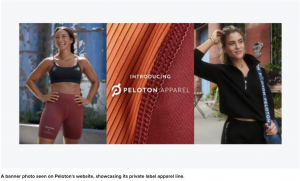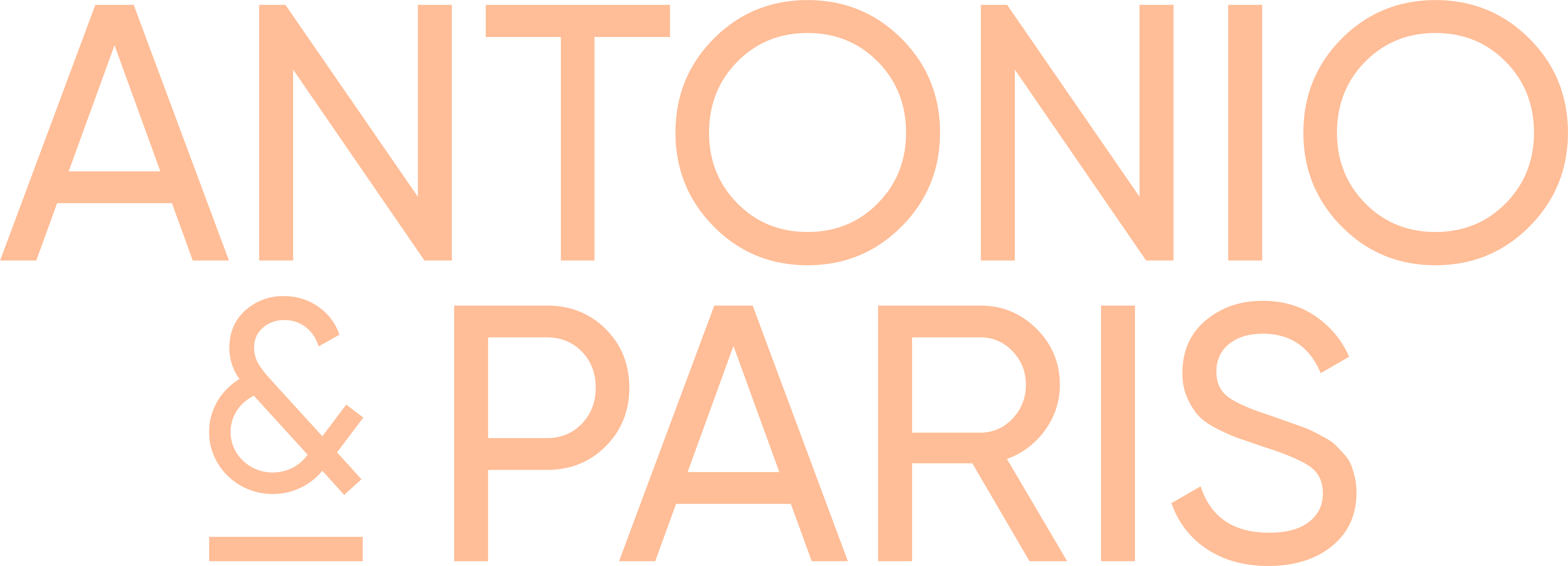Create Brand Evolution Through Brand Extension
BY: ZACK MISKEL | APRIL 5, 2022 – 5 MIN READ

Create Brand Evolution Through Brand Extension
BY: ZACK MISKEL | APRIL 5, 2022 – 5 MIN READ

Key Takeaways (5-minute read)
- Brands must evolve and grow in order to move forward and stay alive in an ever-changing climate, no matter the industry.
- Look to “adjacent” industries to your primary market for growth opportunities.
- Keep offerings consumer-centric by focusing on what people need, want, and love from your brand.
Evolving or growing a brand doesn’t have to mean completely changing it; in fact, it shouldn’t, unless something is very wrong and needs to be fixed. But evolution is a natural part of life, and that goes for business as well. If you’re not moving forward, you’re falling behind. One way to move forward is through a brand extension as you seek pathways to further solidify your brand with your target market. Brand-adjacent industries that you already know well enough to explore as viable options for expansion could be a way to drive your revenue and connect with new and existing consumers.
What do we mean by “brand extension”? It’s a part of natural growth wherein brand leaders can—and should—consider ways to expand business through “bonus” content, consumer-centric offerings, or strategically creative new avenues for ROI.
For a recent example, we love that Peloton recently launched a new clothing line in September of 2021. The fitness empire already had apparel available, but the new line launch was more in line with what its consumers truly wanted. With a focus on fashion, function, and giving more options to their already-loyal audience, Peloton more than doubled its apparel sales (growing revenue from apparel alone to over $100 million) in 2021 versus 2020. The brand’s VP of Apparel, Jill Foley, calls it “an extension of the brand.” She goes on, “More and more, we are seeing non-hardware owners purchase apparel—” AKA, those who don’t own a Peloton bike or fitness equipment. “—just because the brand has a fun energy to it that people like. And especially as we’ve gotten into smaller logo treatments.”
The brand’s VP of Apparel, Jill Foley, calls it “an extension of the brand.” She goes on, “More and more, we are seeing non-hardware owners purchase apparel—” AKA, those who don’t own a Peloton bike or fitness equipment. “—just because the brand has a fun energy to it that people like. And especially as we’ve gotten into smaller logo treatments.”
In other words, a successful brand can play off its success in industries that are different from its primary offering if those offerings still resonate with consumers. People want to support the companies that they feel connected to, and a Peloton owner who rides the bike daily is more likely to buy fitness apparel from Peloton than another company if it’s a quality piece of clothing and offers even more opportunity to connect with the brand they already love. It’s a no-brainer.
Clorox might be one of the most successful examples of using brand extension as part of its evolutionary success. The primarily bleach and laundry-focused brand expanded its reach to a wide variety of household and commercial cleaning products. Who doesn’t know and trust Clorox to at least kill germs, which has been its go-to client-facing mission since its beginning in 1914? The company says of its desired growth through brand extension in the 1950s, “Still a single-product company in the postwar boom years, Clorox sought a merger partner. To keep growing, we needed new products and broader marketing.” From bleach and laundry detergent sprouted an empire of surface cleaners, kitchen and bathroom products, sponges, brushes, mops, and, eventually, the all-time favorite, Clorox Wipes.
Fender, the legendary guitar company known for catering to the true rockstars, also got into the brand extension game in more recent years. As clients expressed a need for high-quality accessories for their musical endeavors, Fender stepped up to the mic to answer their questions in a manner they could trust and that would further drive revenue in a sector that’s separate but very much adjacent to its former instrumental offerings. Now, when a customer asks, “What headphones will be best to use with my new Fender guitar?” the company can direct them to its own line of premium speakers, headphones, and earbuds.
 Content can also bring important changes in a brand’s offerings that will help connect with consumers in an organic way that is focused on giving them more. Our clients at The Franklin Institute, for example, has an arsenal of trusted science experts and a museum full of knowledge at its disposal, and recently launched podcast and video series through an all-new online platform built by the A&P team, Beyond, which extends this formerly brick-and-mortar brand into the digital entertainment industry. It may seem like a leap, but the science and space-themed content resonates with lovers of the museum. The Franklin Institute’s adventurous and curious audience is known for always seeking more, and releasing content though Beyond is a way for the brand to directly offer that in a way that will build and retain an audience.
Content can also bring important changes in a brand’s offerings that will help connect with consumers in an organic way that is focused on giving them more. Our clients at The Franklin Institute, for example, has an arsenal of trusted science experts and a museum full of knowledge at its disposal, and recently launched podcast and video series through an all-new online platform built by the A&P team, Beyond, which extends this formerly brick-and-mortar brand into the digital entertainment industry. It may seem like a leap, but the science and space-themed content resonates with lovers of the museum. The Franklin Institute’s adventurous and curious audience is known for always seeking more, and releasing content though Beyond is a way for the brand to directly offer that in a way that will build and retain an audience.
How can your brand break into a new industry through a natural progression of your current offerings? What’s the best way to market that growth to your audience and grow brand loyalty? At A&P, we’re all about finding ways to disrupt the norm—as long as they ultimately keep the best connection between brands and consumers in mind. Give the people what they want, but do it in a strategic way that will not only boost your bottom line, but also cultivate love among your valued audience members. Let us help you figure out the next step toward a brand evolution that could change everything.
About A&P
A&P, a brand agency, excels in finding innovative ways for clients to provide exceptional experiences to their customers. Their work includes consumer insight, brand innovation, creative development, mobile and technology solutions for global brands such as AT&T, Mini USA, DIRECTV, Newell Rubbermaid, Tenet Healthcare, and Barco Escape. For more information about A&P, visit them on Facebook, Twitter or antonioandparis.com.
Key Takeaways (5-minute read)
- Brands must evolve and grow in order to move forward and stay alive in an ever-changing climate, no matter the industry.
- Look to “adjacent” industries to your primary market for growth opportunities.
- Keep offerings consumer-centric by focusing on what people need, want, and love from your brand.
Evolving or growing a brand doesn’t have to mean completely changing it; in fact, it shouldn’t, unless something is very wrong and needs to be fixed. But evolution is a natural part of life, and that goes for business as well. If you’re not moving forward, you’re falling behind. One way to move forward is through a brand extension as you seek pathways to further solidify your brand with your target market. Brand-adjacent industries that you already know well enough to explore as viable options for expansion could be a way to drive your revenue and connect with new and existing consumers.
What do we mean by “brand extension”? It’s a part of natural growth wherein brand leaders can—and should—consider ways to expand business through “bonus” content, consumer-centric offerings, or strategically creative new avenues for ROI.
For a recent example, we love that Peloton recently launched a new clothing line in September of 2021. The fitness empire already had apparel available, but the new line launch was more in line with what its consumers truly wanted. With a focus on fashion, function, and giving more options to their already-loyal audience, Peloton more than doubled its apparel sales (growing revenue from apparel alone to over $100 million) in 2021 versus 2020.
The brand’s VP of Apparel, Jill Foley, calls it “an extension of the brand.” She goes on, “More and more, we are seeing non-hardware owners purchase apparel—” AKA, those who don’t own a Peloton bike or fitness equipment. “—just because the brand has a fun energy to it that people like. And especially as we’ve gotten into smaller logo treatments.”
In other words, a successful brand can play off its success in industries that are different from its primary offering if those offerings still resonate with consumers. People want to support the companies that they feel connected to, and a Peloton owner who rides the bike daily is more likely to buy fitness apparel from Peloton than another company if it’s a quality piece of clothing and offers even more opportunity to connect with the brand they already love. It’s a no-brainer.
Clorox might be one of the most successful examples of using brand extension as part of its evolutionary success. The primarily bleach and laundry-focused brand expanded its reach to a wide variety of household and commercial cleaning products. Who doesn’t know and trust Clorox to at least kill germs, which has been its go-to client-facing mission since its beginning in 1914? The company says of its desired growth through brand extension in the 1950s, “Still a single-product company in the postwar boom years, Clorox sought a merger partner. To keep growing, we needed new products and broader marketing.” From bleach and laundry detergent sprouted an empire of surface cleaners, kitchen and bathroom products, sponges, brushes, mops, and, eventually, the all-time favorite, Clorox Wipes.
Fender, the legendary guitar company known for catering to the true rockstars, also got into the brand extension game in more recent years. As clients expressed a need for high-quality accessories for their musical endeavors, Fender stepped up to the mic to answer their questions in a manner they could trust and that would further drive revenue in a sector that’s separate but very much adjacent to its former instrumental offerings. Now, when a customer asks, “What headphones will be best to use with my new Fender guitar?” the company can direct them to its own line of premium speakers, headphones, and earbuds.
Content can also bring important changes in a brand’s offerings that will help connect with consumers in an organic way that is focused on giving them more. Our clients at The Franklin Institute, for example, has an arsenal of trusted science experts and a museum full of knowledge at its disposal, and recently launched podcast and video series through an all-new online platform built by the A&P team, Beyond, which extends this formerly brick-and-mortar brand into the digital entertainment industry. It may seem like a leap, but the science and space-themed content resonates with lovers of the museum. The Franklin Institute’s adventurous and curious audience is known for always seeking more, and releasing content though Beyond is a way for the brand to directly offer that in a way that will build and retain an audience.
How can your brand break into a new industry through a natural progression of your current offerings? What’s the best way to market that growth to your audience and grow brand loyalty? At A&P, we’re all about finding ways to disrupt the norm—as long as they ultimately keep the best connection between brands and consumers in mind. Give the people what they want, but do it in a strategic way that will not only boost your bottom line, but also cultivate love among your valued audience members. Let us help you figure out the next step toward a brand evolution that could change everything.
About A&P
A&P, a brand agency, excels in finding innovative ways for clients to provide exceptional experiences to their customers. Their work includes consumer insight, brand innovation, creative development, mobile and technology solutions for global brands such as AT&T, Mini USA, DIRECTV, Newell Rubbermaid, Tenet Healthcare, and Barco Escape. For more information about A&P, visit them on Facebook, Twitter or antonioandparis.com.

WRITTEN BY
Zack Miskel
Short Bio — Zack joined the Antonio & Paris team at the beginning of 2019 after spending the previous five years running two start-up companies in the Bay Area Now a strategist, Zack works alongside the strategic planning team at Antonio & Paris to deliver a big-picture perspective for clients such as MINI USA, Barco (Belgium), and Brookdale Senior Living, to name a few.

WRITTEN BY
Zack Miskel
Short Bio — Zack joined the Antonio & Paris team at the beginning of 2019 after spending the previous five years running two start-up companies in the Bay Area Now a strategist, Zack works alongside the strategic planning team at Antonio & Paris to deliver a big-picture perspective for clients such as MINI USA, Barco (Belgium), and Brookdale Senior Living, to name a few.

